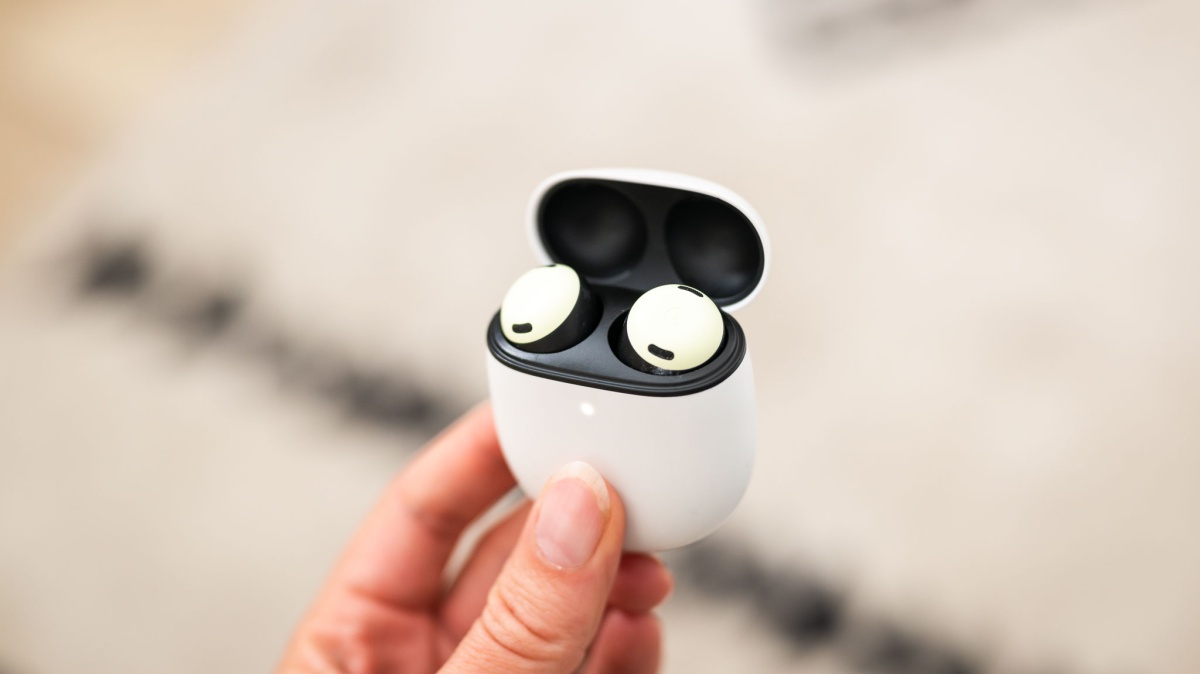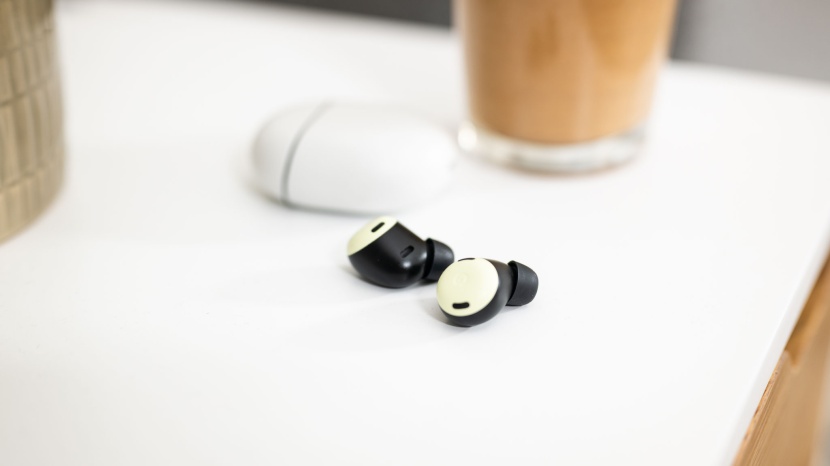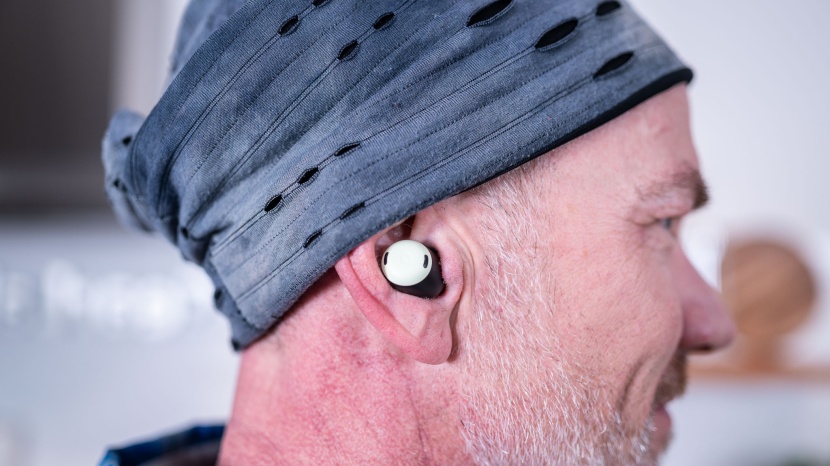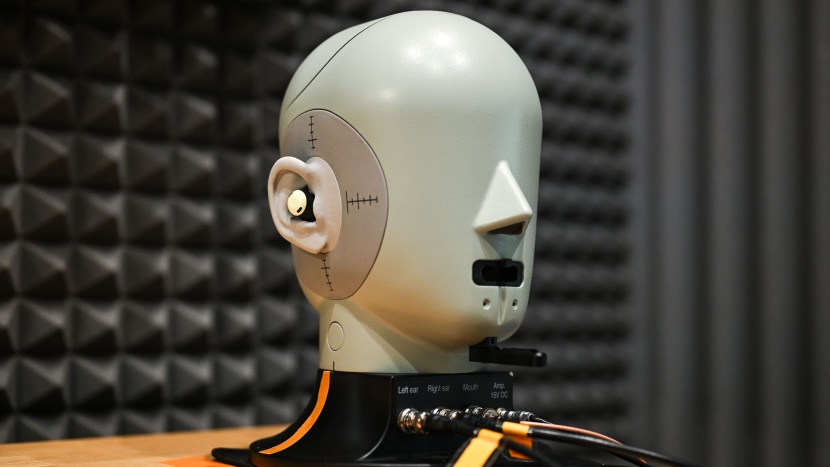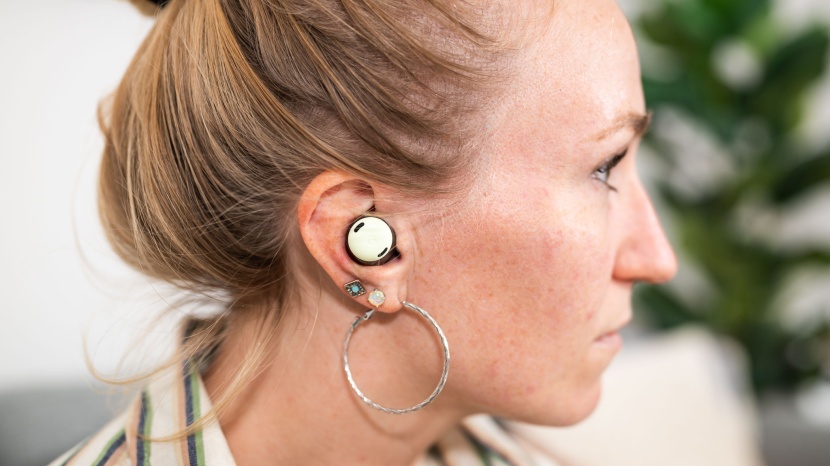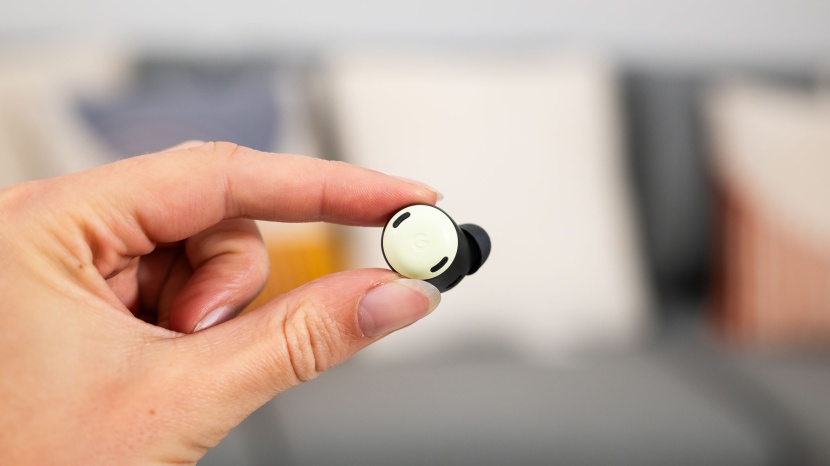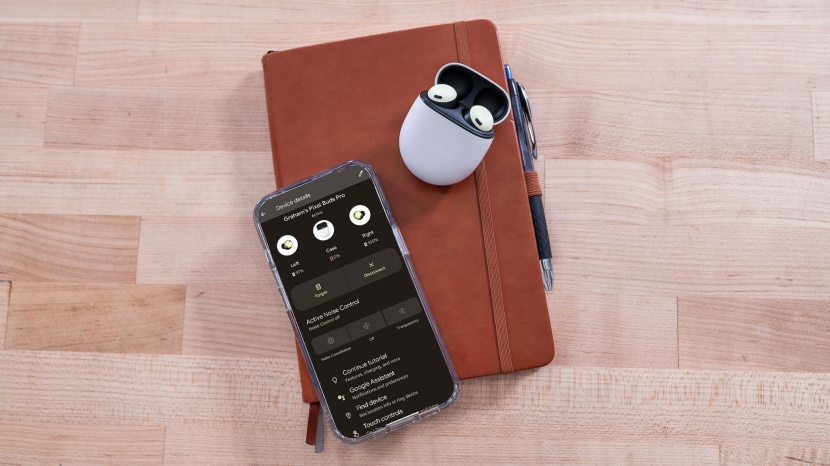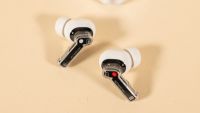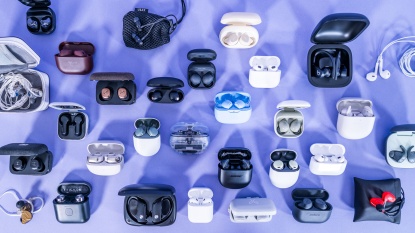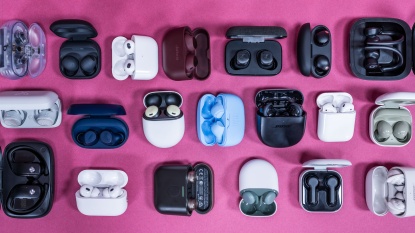
Our Verdict
Our Analysis and Test Results
These Google earbuds offer a richer, more developed sound than other versions we've tried.
Sound Quality
We recruited a panel of audio experts to evaluate the sound quality of these earbuds. We curated an extensive, genre-spanning playlist, listening to country music while commuting, classical while working, and pop, hip hop, and R&B while working out. Here's what we discovered.
These earbuds deliver a delightful listening experience, with a warm, rich signature and a pleasing mix. While the frequency balance is pleasing, it doesn't dazzle like the top earbuds in our testing. Our favorite songs sound accurate and enjoyable, but don't truly sparkle.
The bass is warm and punchy with some rumble and thump, ensuring that these earbuds shine in booming genres like hip-hop, modern pop, and alternative. The energetic mix of bass and electronic elements in songs like “This Could Be Us” by Rae Sremmurd is a blast with these buds.
Though the strong bass enhances electronic tracks with its bouncy sound, it is a touch overemphasized in most tracks. The mid and treble tones are full, with reasonable articulation, but they can sound less present in the mix. We prefer a more refined sound in these frequencies.
The treble can hover low in the mix, lacking emphasis. For example, Robert Plant's vocals in “When the Levee Breaks” by Led Zeppelin sound clear and present, but we're left wanting a bit more definition from the percussive hi-hat.
The details these earbuds reveal can make an old favorite sound like a brand new song. When relistening to Taylor Swift's Midnights, we were delighted by details we'd never heard through lesser earbuds or car speakers. We also caught new details in old favorites like “Work It” by Missy Elliott and “Fallin'” by Alicia Keys. Clear separations between frequency ranges and a balanced mix help such accuracy shine.
On the downside, the accurate translation and emphasis on details can make the transition between new and older music jarring at times. For example, in Bob Marley's “Could You Be Loved,” the drums sound extremely forward and present, competing with slightly muddled vocals. In contrast, Taylor Swift's “False God” sounds punchy, sharp, and clean. The saxophone at 2:21 doesn't descend into muddy tones even as the song layers.
We constantly turned the volume up on these earbuds. At higher levels, they are extra punchy, providing plenty of power for those who like loud music. The solid sound quality is reliable across all volume levels, but we'd prefer a wider dynamic range within each volume setting.
Soundstage
At live concerts, sound is emitted from speakers positioned in front of you, with some sound reflecting off nearby surfaces. In a quality movie theater, surround sound brings you into the action. Similarly, an earbud's soundstage dictates where the music seems to originate.
Due to their small size and in-ear design, earbuds tend to deliver a more confined listening experience. Achieving an expansive sound is a rare feat. Google's Pixel Buds Pro earbuds buck the trend, creating a sense of space and placing instruments precisely.
The Buds Pro have a richer, more resonant sound than the previous version, thanks in part to the larger and more expansive soundstage. From 1:40 to 1:55 of Hozier's “Too Sweet”, the percussion, electric guitar, layered vocals, and haunting harmonica swirl around you, yet you can place the harmonica clearly in the right earbud while the electric guitar accents come in from the left.
The driving bass line and Hozier's honey-thick, smooth baritone are the central forces of this song. These earbuds are able to maintain clarity amid the textural complexity. The sound is clean and crisp despite the rapid-fire action. Google advertises this surround sound effect as “spatial audio,” claiming that it's an ideal feature for watching TV shows and movies.
After listening to our playlists for weeks, we turned to our Brüel & Kjaer Type 5128 Head Simulator and SoundCheck program to double-check our results. We charted the frequency response curve for the Pixel Buds Pro, and compared it to our GearLab House Curve.
As you can see in the chart above, the curves are similar. The middle frequencies are slightly more emphasized in the Pixel Buds Pro, yet they sounded a little low in the mix around 560 Herz. Although there were slight inconsistencies, they still sounded great. The treble range is a little lower in general, with a big dip in the higher reaches. That supports our experience.
Comfort and Fit
We recruited over 12 testers to try them on for comfort and fit. We wore them for various activities. Despite their bulky appearance, they are deceptively light and airy in fit. They come with three silicone ear tip sizes that mold to your ear's shape, making them so comfortable they're barely noticeable during extended use. We had no trouble wearing these earbuds for an hour without needing a break. A few options are more comfortable, but not by much.
Stability
The cozy fit also provides quite a bit of stability. We wore these earbuds around town, at the office, and during our commute, and rarely worried about losing one. They passed my headstand test, but the left earbud blew out when headbanging. You should be fine if you can control your compulsion to rock out. They're rated IPX4, so they can withstand water splashes from any direction. They worked well through sweaty workouts.
Noise Cancellation
While not quite breaking into the top tier of active noise cancelling (ANC) earbuds in the test, the Pixel Buds Pro are the best of the rest. They help us ignore distractions in the office and allow us to focus on the music, but they don't create the zone of concentration that the top options in the test provide.
Noise cancellation in these earbuds is achieved through two methods: passive noise isolation, which physically blocks sound by fitting snugly in your ears, and active noise cancellation, which counters sound waves. Passive isolation is more effective against high-frequency sounds, while ANC better silences low, consistent noises like engine hums.
The passive noise isolation blocks between 20 and 40 decibels of sound in the higher frequency ranges, 10 or more among mid-levels, and up to 10 decibels in bass frequencies, as shown in the chart below. The result is impressive, lowering our blood pressure immediately.
You can also see the results of the ANC test in the chart above. It blocks between 15 and 25 decibels in the low and mid-tones. Above that, the passive isolation is doing more of the work. If you like the noise-dampening feature but worry that you might need to be more aware of your surroundings in a busy environment, you can switch to transparency mode, which pipes ambient sounds past the physical barrier of the earbuds and into your ear.
Ease of Use
If you're in the Google ecosystem, the Pixel Buds Pro are pleasant to use and rank well in this metric. Their biggest downside is the app doesn't work with iOS.
App Features
These earbuds are very easy to pair, use, and adjust if you have an Android phone and are in the Google ecosystem. They do work with Apple devices via Bluetooth, but you can't access the app's features.
With an Android device, you can shift the frequency response curve using the 5-band manual equalization (EQ), an ear fit test, and a low-latency mode that reduces the lag time between your screen and your ears. We appreciate that there is a “Hearing Wellness” feature to track how often and for how long you're exposing yourself to potentially dangerous noise levels.
You can control basic functions with the buds themselves. A tap will start or stop music or calls. An extended hold switches to noise-cancelling mode, and swiping adjusts the volume levels. You can also get help hands-free from Google Chat, which can complete tasks like sending texts or giving you live language translations.
Multipoint connectivity lets you switch between multiple devices. A conversation detection function stops your music and shifts to transparency mode when you speak, so you can hear a response.
Connectivity
Our experience was notably absent of any connection problems. To supplement our experience, we also collected data by surveying 1-star Amazon user reviews and determining the ratio of reviews with negative feedback on connectivity relative to the total number of reviews.
The reported issue rate for these earbuds was 0.56%, which is relatively low for the group.
Battery Life
One of our favorite features of the Pixel Buds Pro is how long their batteries last. They played music at 75% of their max volume for 11 hours and 15 minutes straight, one of the better results in the test and 15 minutes longer than the 11 hours that Google advertises.
The case holds two more full charges, while many competing earbuds hold three to five. If you need a quick turnaround, five minutes on the charger will buy you an extra hour of listening time.
Call Quality
To test call quality, we made two recordings, one with a male voice and one with a female voice, and played them through the speaker in our high-tech sound recording head simulator (the Bruel and Kjaer 5128-B). We repeated this test in a silent room with office sounds in the background and on a subway platform.
These earbuds work well for phone calls in quiet, calm environments. They translate your voice clearly, making it easy to carry on a conversation. However, as background noise levels rise, even to modest levels, these earbuds struggle to isolate your voice from the surrounding frequencies.
We tested call quality with Subway noise playing in the background, and the voices dropped out almost completely. These earbuds were among the poorest performers in this test.
In an office, the Google Pixels reduce the background noise well, but the voice quality is slightly reduced.
In the quiet room, it's easy to hear the speakers' voices clearly.
Should You Buy the Google Pixel Buds Pro?
These earbuds are a potential contender if you use Android devices and are plugged into Google. Their seamless integration, uber-comfortable fit, wildly long battery life, and standout audio quality make them a standout. But their active noise cancellation isn't top-tier, and they struggle to isolate voices for clear phone calls. If you need to prioritize those features, you should probably look elsewhere.
What Other Earbuds Should You Consider?
If you're not heavily reliant on ANC, the Nothing Ear Wireless offers great sound quality and a comfortable fit for many ear sizes while helping you save a pretty penny. If you do need better noise cancellation, the newly released Samsung Galaxy Buds3 Pro have significantly improved over their previous generation, giving them the edge over the Google Pixel Buds Pro and might be a good investment. However, our favorite Google Buds at the moment have to be the improved Google Pixel Buds Pro 2, which are better than the originals.
Compare to Similar Products
 This Product Google Pixel Buds Pro | |||||
|---|---|---|---|---|---|
| Awards | Best for Android Users | Best for Apple Users | Best Mid-Range | Best Wired | |
| Price | $200 List $198.42 at Amazon | $229 List $209.00 at Amazon | $249 List $199.00 at Amazon | $149 List $129.00 at Amazon | $24 List $21.59 at Amazon |
Overall Score  |
|||||
| Star Rating | |||||
| Bottom Line | For Android lovers who appreciate quality sound, and solid app, and extra long battery life | With excellent sound quality and a comfortable fit, these earbuds are great for Android users, but iOS users might want to look elsewhere | Great noise cancellation that lets you appreciate their excellent sound quality | Impressive sound and solid user experience, less impressive battery life | Trades wireless ease for great sound, comfort, and a pleasantly low price |
| Rating Categories | Google Pixel Buds Pro | Google Pixel Buds P... | Apple AirPods Pro 2 | Nothing Ear Wireless | Linsoul KZ ZSN Pro X |
| Sound Quality (40%) | |||||
| User Experience (20%) | |||||
| Noise Cancellation (15%) | |||||
| Battery Life (15%) | |||||
| Call Quality (10%) | |||||
| Specifications | Google Pixel Buds Pro | Google Pixel Buds P... | Apple AirPods Pro 2 | Nothing Ear Wireless | Linsoul KZ ZSN Pro X |
| Measured Battery Life | 11.3 hr | 10.0 hr | 8.5 hr | 7.7 hr | N/A |
| Earbud Location Tracking | Yes | Yes | Yes | No, earbuds can emit a sound but no true location tracking | No |
| Active Noise Cancelling | Yes | Yes | Yes | Yes | No |
| Waterproofing | IPX4 | IP54 | IP54 | IP54 | N/A |
| Transparency Mode | Yes | Yes | Yes | Yes | No |
| Measured Weight | 0.22 oz | 0.17 oz | 0.38 oz | 0.17 oz | 1.06 oz |
| Quick Charging | 5 min | 3 min | 5 min | 1 min | N/A |
| Charges Per Case | 2 | 3 | 4 | 5 | N/A |
| Claimed Battery Life | 11 hrs | 12.0 hrs | 6 hrs | 8.5 hrs | N/A |
| Charging Carrying Case | Yes | Yes | Yes | Yes | N/A |
| Tested Wireless Charging Option | Yes | Yes | Yes | Yes | No |
| Multipoint | Yes | Yes | Two Apple devices simultaneously | Yes | No |
| In-ear Detection | Yes | Yes | Yes | Yes | No |
| Ear Tips Sizes | 3 sizes | 4 sizes | 4 sizes | 3 sizes | 4 sizes |


